
Question and Answers Forum
Question Number 58756 by Tawa1 last updated on 29/Apr/19
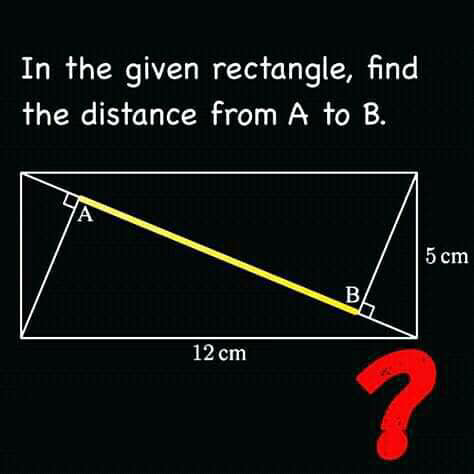
Answered by Kunal12588 last updated on 29/Apr/19
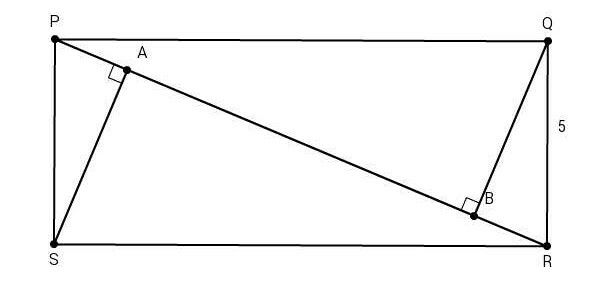
Commented by Kunal12588 last updated on 29/Apr/19
![PR=(√(5^2 +12^2 ))=13 cm ∠RBQ=∠RQP [each 90°] ∠QRB=∠PRQ [common] ∴ △BQR ∼△QPR ⇒((BR)/(QR))=((QR)/(PR)) ⇒((BR)/5)=(5/(13)) ⇒BR=((25)/(13)) cm AB=PR−2BR ⇒AB=13−((50)/(13))=((119)/(13)) cm=9.1538... cm](Q58763.png)
Commented by Tawa1 last updated on 29/Apr/19

Commented by maxmathsup by imad last updated on 30/Apr/19
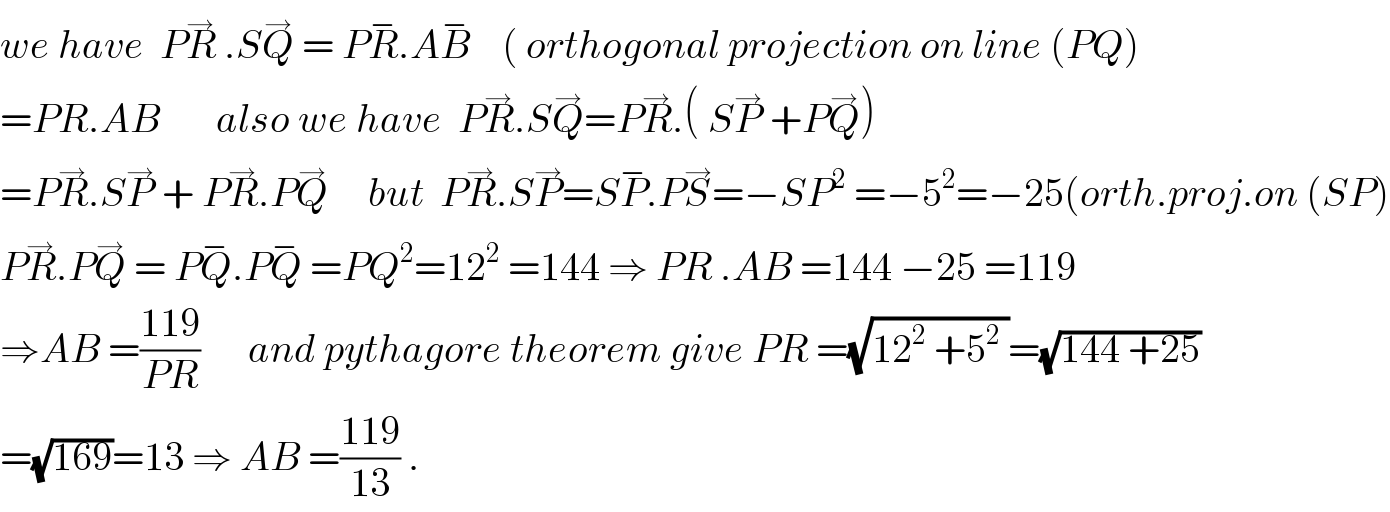
Commented by maxmathsup by imad last updated on 30/Apr/19

Answered by tanmay last updated on 29/Apr/19
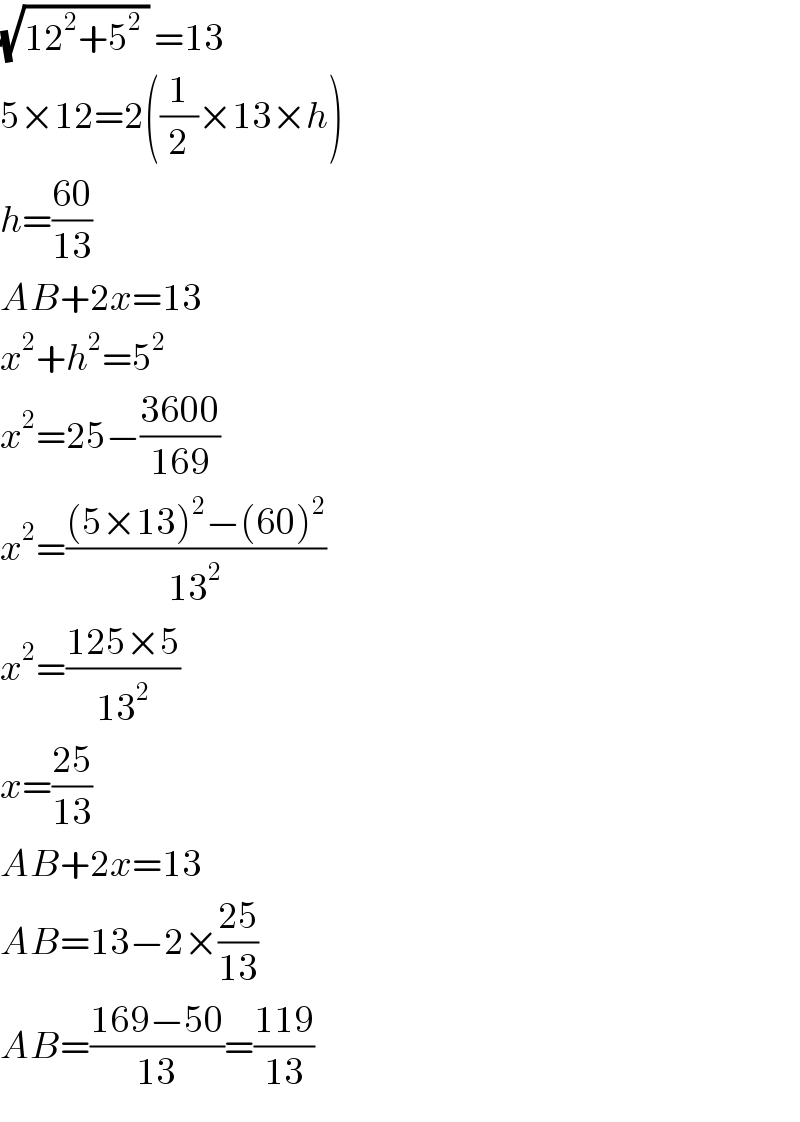
Commented by Tawa1 last updated on 29/Apr/19

Answered by ajfour last updated on 29/Apr/19
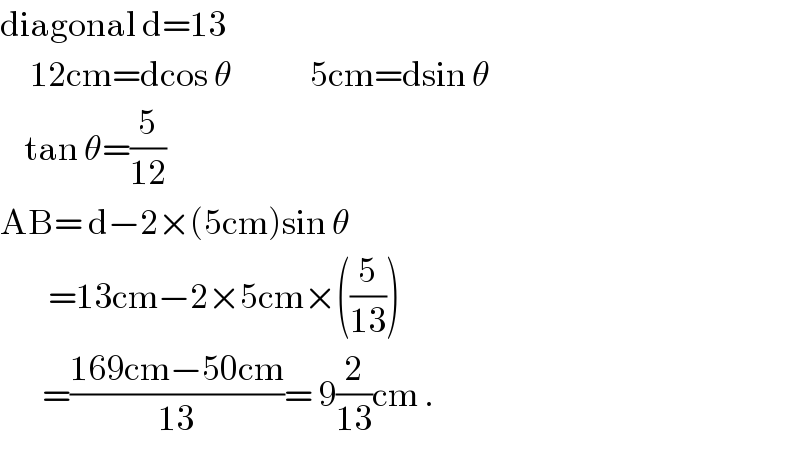
Commented by Tawa1 last updated on 29/Apr/19

